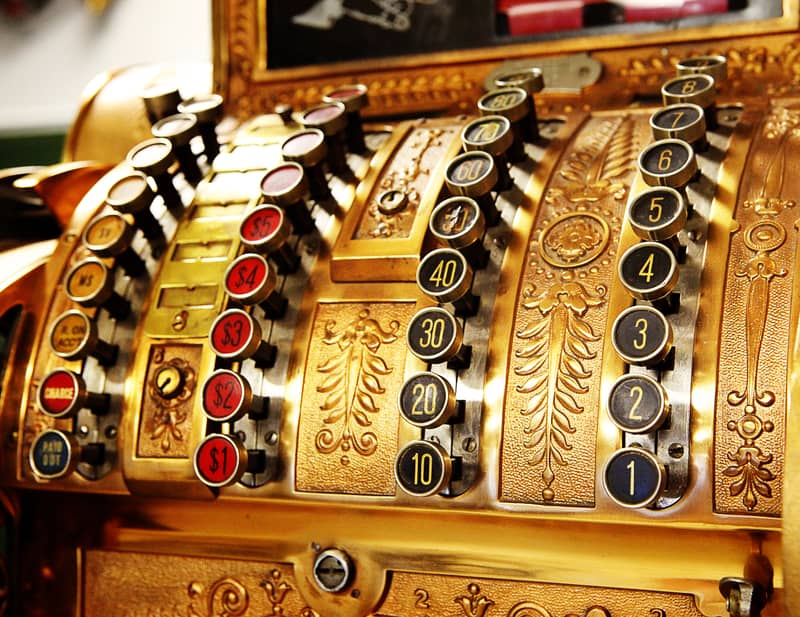Windy City Coin Op And Advertising Show Of Chicago

Antique and Vintage Cash Registers
Whether their exteriors are made from ornately detailed metal or highly polished wood, antique cash registers are considered works of art by many collectors.
The first cash register was patented in 1879 by a Dayton, Ohio saloonkeeper who was fed up with having his employees steal from him. James Jacob Ritty’s “Incorruptible Cashier” proved to be the foundation for National Cash Register Company, known today as NCR.
For collectors, National Cash Register machines are desirable because of their beauty—the ornamental relief on the outsides of their brass-, bronze-, and nickel-plated cash registers is as lovely as the marquetry on walnut or oak ones. But antique NCR cash registers are also popular because the company’s serial numbers make them relatively easy to date. Machines with numbers below 190,000 are from the 19th century, registers with numbers between 190,000 and 800,000 were made between 1900 and 1910, and so on.
Series numbers are another way to determine a National Cash Register’s value. Among the most collectible are the large Series 500 machines, which were used by department stores. Sometimes just a single cash-register key makes an antique NCR cash register collectible, such as those with a DR key (for dining room) used by hotels.
National Cash Register was not the only cash-register company, but it might as well have been. Of the 80-plus competitors in business in the late 1800s, only three made it into the 20th century. Ideal produced registers that were highly ornate and used levers instead of keys. And then there was Michigan, which made cash registers that looked the most like NCRs. One of its most popular machines was a bronze beauty that took up just nine inches of counter space and cost only $35.
